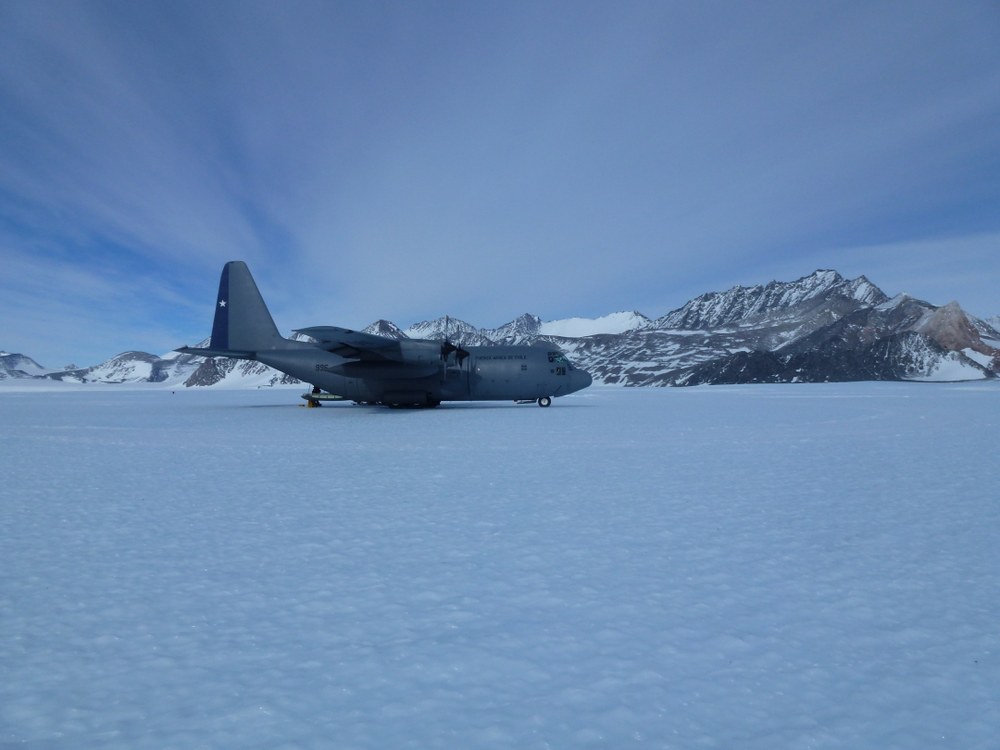EOC Participates in Chilean Antarctic Measurement Campaign



The landing of two C-130 Hercules transport aircraft on a blue ice runway launched the “hot” phase of a Chilean campaign on Union Glacier end of November 2016. The team consisting of South American scientists and members of the Chilean armed forces was joined by a scientist from the German Remote Sensing Data Center (DFD) “Antarctic junior scientists group”, which is financed by the DLR executive board. Under the leadership of University of Santiago, Chile (USACH) the reflectivity of sunlight (albedo) was measured and snow samples were collected. The high albedo in polar regions is an important factor influencing Earth’s global radiation balance.
The placement of two instruments for determining snow albedo at the edge of the Transantarctic Mountains made it possible to successfully extend a time series of several years of measurement data collected during the summer months. Having such in-situ data contributes to understanding snow reflectivity—an important value in the global climate system. In addition to setting up and operating the instruments, snow samples were collected from different profile layers. Transported back to Punta Arenas, these specimens will be studied by Chilean colleagues for their soot content (so-called black carbon). The sampling location on Union Glacier is the southernmost measuring point of a transect along the chain of the Chilean Andes. The goal of the Chilean project is to investigate more precisely the influence of black carbon on the optical properties of snow, and thus on the climate.
Logistics for the scientists’ stay are provided by two bodies. The Instituto Antártico Chileno (INACH) supports and coordinates Chile’s scientific activities in the Antarctic. INACH is also the interface to the Chilean armed forces, which operate the local infrastructure and assure catering for the camp residents, thereby guaranteeing smooth execution of the science activities.
Initial stimulus to initiate cooperation with Chile in the context of DLR’s programme to sponsor international collaboration projects has thus led to the first joint activities in the Antarctic. Discussions between Universidad de Santiago de Chile and DFD’s “Antarctic junior scientists group” on current research and possible subjects for future cooperation have been going on since autumn 2014. In late summer 2016 an invitation extended by Chilean partners to join in a 10-day campaign in the southern Antarctic Peninsula could be accepted. Participation at this polar research site yielded valuable experience and expanded international networking on polar research topics. Polar research activities at the Earth Observation Center (EOC) are brought together in a Polar Working Group, and have been further refined at DFD by the recent establishment of a “Polar and Cold Regions” team in the Land Surface Department.
